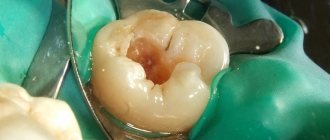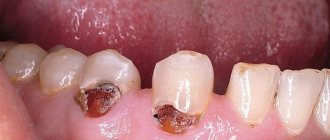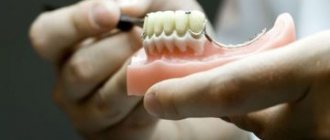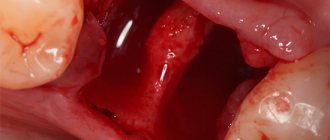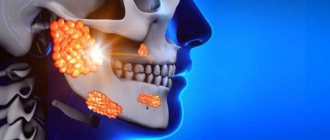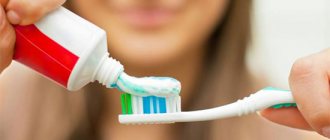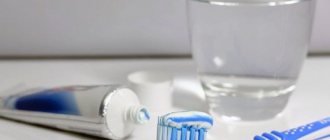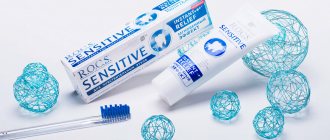A person initially learns about the importance of oral hygiene in early childhood. Care and hygiene include regular brushing of teeth. But, unfortunately, there are people who do not understand why brush their teeth, and even twice a day.
If we look at history, our ancestors did not use either brushes or toothpaste for their own dental hygiene. This is, of course, a valid point. But it is also true that the analogue of the modern toothbrush was created at the very end of the eighteenth century. And mass use began no earlier than the nineteenth century.
But these facts do not mean that the ancestors did not pay attention to their own oral hygiene ; they simply had available means in their everyday life. For example, such as resin, herbs or just tree bark.
Why is dental hygiene important for humans?
Teeth are the most important indicator of human health and therefore it is necessary to change your idea of oral hygiene. It is very important to pay more attention to dental health and try to regularly undergo examinations by a specialist dentist.
If problems are detected, the doctor will promptly prescribe treatment and further prevention. Using toothpastes, you can prevent infection in your mouth and prevent gum and tooth disease.
Maintaining oral health not only increases self-confidence, but also reduces the risk of coronary heart disease, diabetes and other possible diseases.
In the world of dental products, making a choice is quite difficult. An examination by a specialist in a clinic will help you choose the right product. Only a doctor can tell which product is more suitable for the client’s teeth. After all, the specialist selects it strictly individually, taking into account the characteristics of the patient’s oral cavity.
Types of toothpastes
There are two types of dental hygiene products. For adults and for children from “0+” - for baby teeth. The compositions of such pastes differ from each other in filling and content of active ingredients.
Let's look at the example of hygiene products from the Lakalut brand.
Toothpaste for adult teeth is represented by the following line:
- Healing and strengthening.
- Preventive.
- Whitening for daily care.
- To eliminate bad breath.
The children's ruler meets the following requirements for baby teeth:
- Safe, as children often simply swallow it.
- Pleasant to the taste so that the child experiences pleasure during this teeth cleaning procedure.
- Useful because it protects teeth from caries.
Classification of toothpastes
In the ranking of dental care products, it is customary to distinguish three main types: hygienic, therapeutic and prophylactic, and professional.
- Hygienic paste is intended for the initial cleansing of teeth from plaque formed after sleeping or eating.
- Therapeutic and prophylactic serves to prevent caries, perfectly relieves inflammatory processes and reduces the sensitivity of teeth to temperature changes in food and bleeding gums. This product contains abrasive substances that help whiten tooth enamel.
- Professional toothpaste is used to solve problems arising from the disease. It suppresses pathogenic flora, thereby reducing the possibility of further development of the disease. Used in the treatment of caries, inflammation, fungal diseases.
Therapeutic and prophylactic pastes
If you have any problems with the condition of your gums or teeth, a wide variety of pastes from the category of therapeutic and prophylactic pastes are at your service. In addition to the basic components already listed, specialized drugs are added to them. Most often, such hygiene products are sold in pharmacies.
Today, all pastes in this category are divided into two main categories:
- Combined - include two or more therapeutic and prophylactic ingredients to more effectively solve one specific problem (for example, a paste that helps prevent or treat initial forms of caries may contain calcium and fluoride).
- Complex - include several components that solve each individual problem (for example, a paste may contain anti-inflammatory, antibacterial and enamel-strengthening components). We should not forget that some medicinal components can have a wide spectrum of action and help against several problems, especially plant extracts.
Based on the type of effect and, accordingly, the specific set of components, the following types of pastes for treatment and prevention are distinguished:
- saturating the enamel with essential minerals (contain salt complexes, phosphates, fluorine and calcium compounds);
- affecting periodontal tissue (including anti-inflammatory, antiseptic substances; components that stop bleeding; extracts of herbs used to treat periodontal tissue; mineral salts);
- preventing the formation and mineralization of dental plaque (the composition includes more intensively acting abrasive components and substances that prevent crystallization, for example, pyrophosphates, which prevent the hardening of calcium phosphate);
- reducing the sensitivity of enamel, strengthening the tooth structure (contains potassium and strontium compounds, formalin);
- bleaching (among the components are the already mentioned inhibitors of crystal formation, abrasives, and peroxide compounds)
- refreshing (include antimicrobial and flavoring components).
When choosing a therapeutic and prophylactic paste, it is better to consult a dentist, since many of them are not intended for use on an ongoing basis.
What toothpaste do dentists recommend?
Dentists recommend fluoride toothpastes.
Today, the requirements for the quality of hygiene products Work is constantly underway to develop recipes that will include components that are more effective and safe.
Fluorine is harmful in large quantities, but of all known fluorine compounds, manufacturers use the least harmful ones. One such organic compound is amino fluoride. Its effect on teeth is more effective and quite delicate.
Dentists have divided all dental care products into two main groups - hygiene products and therapeutic and prophylactic ones.
Recommendations and warnings
To prevent the development of caries, it is recommended to use toothpastes with a high content of calcium salts, which ensures the strength of the enamel and fluorides, which form a protective layer and prevent the leaching of inorganic components.
If a carious lesion already exists, then it is better to use pastes without fluoride, since they will no longer be able to stop the development of the disease, and the aggravation of the process is possible.
The natural mineralizing properties of saliva are improved by using complex therapeutic and prophylactic pastes, which include sodium monofluorophosphate. To strengthen hard tissues, calcium hydroxyapatite is often included in the composition, which is a ready-made “building material” for enamel.
Please note: Paste as such cannot completely eliminate the development of caries. Choosing the right toothbrush and following the correct teeth brushing technique is of great importance!
Pastes are useless against already formed mineralized deposits, but products that include pyrophosphates reduce the risk of their formation by half!
Pastes without fluoride are indicated for people living in areas where this element is contained in sufficient quantities in running water used for drinking and cooking. An excess of fluorides can cause fluorosis, the main clinical manifestation of which is the appearance of “chalky” or pigmented (yellowish) spots and stripes on the surface of the enamel. For those who live in the so-called areas. “endemic fluorosis”, we can recommend pastes with a high content of calcium compounds, but without fluorides (Oral-B Sensitive and Colgate Calcium).
It is advisable to use salt pastes for lesions of periodontal tissues and periodontal tissue. Mineral salts improve local blood circulation and stimulate metabolic processes.
The sensitivity of enamel is significantly reduced if you use pastes with a low abrasive index, but containing potassium chloride or nitrate, as well as strontium chloride.
Whitening pastes should be used with caution and not every day. They can lead to a decrease in the strength of the enamel.
Please note: Bleached hard tooth tissues are easily stained by pigments present in coffee, tea, berries, red wine and some vegetables!
Medicinal pastes can only be used on the recommendation of a dentist. They contain enzymes and biologically active components that serve to treat certain pathologies of the oral cavity.
Pastes with a high content of sodium bicarbonate (baking soda) are capable of creating an alkaline environment that neutralizes the effects of acids (including those produced by microorganisms). The high pH persists for 15-20 minutes after the end of hygiene procedures. A hypertensive environment helps reduce swelling of the gums against the background of gingivitis. Baking soda provides excellent enamel cleansing, although it does not have an abrasive effect. Sodium bicarbonate is characterized by bactericidal activity against the bacteria Streptococcus mutans, the vital activity of which is considered one of the leading etiological factors in the development of dental caries.
There is no need to blindly trust commercials and flashy labels on packages.
Important: Only a dentist can choose the optimal toothpaste for you after a routine examination of the oral cavity. You should visit a doctor at least once every six months!
A specialist is able to objectively assess the level of hygiene and identify the presence of certain diseases, as well as predisposition to them. Depending on the condition of the teeth and mucous membranes of the oral cavity, the dentist will give recommendations on the choice of paste.
Remember that it is advisable to purchase hygiene products only in pharmacies or other specialized retail outlets; otherwise, the risk of purchasing counterfeit products is quite high.
Recommendations for choosing toothpaste. Video:
Plisov Vladimir Aleksandrovich, dentist
20, total, today
( 33 votes, average: 4.61 out of 5)
Tooth enamel hypoplasia: causes, symptoms and treatment
Fluoride in toothpaste: benefits and harms
Related Posts
Hygiene group
Suitable for daily use. It perfectly cleans plaque and helps maintain healthy oral microflora. Doctors advise using this paste for people with known healthy teeth and mucous membranes.
For a person with problems, hygiene paste can be used first in the morning. After breakfast, it is better to use a product of a different level. Namely, a therapeutic and prophylactic paste.
Various plant extracts and essential oils are often added to hygiene pastes. The most popular brands among consumers are: “Splat”, “New Pearl”, “Rocks Coffee and Tobacco”.
Let's talk a little about these brands. The most budget option is the New Pearl brand. Despite its low cost, it perfectly copes with its purpose - it gently removes plaque and deodorizes the oral cavity well.
The line of the ROCS trademark is very extensive. The classification of hygiene products includes the “Coffee and Tobacco” paste. Fluorine and antibacterial substances are excluded from the composition, while it has a good density of the cleaning agent. Suitable directly for people suffering from coffee and tobacco addiction. It is a preventative against yellow plaque and tartar formation.
The next product from the hygiene group is “Splat”. This product copes quite well with sensitive teeth and helps to significantly reduce the reaction of teeth and gums to changes in temperature of air, food and liquid. Recommended by dentists at the early stage of inflammatory processes.
Composition of toothpaste
Most of the products clean teeth efficiently, eliminate unpleasant odors, and also prevent oral diseases. Therefore, the category of therapeutic and prophylactic pastes is the most extensive.
Main components:
- essential oils;
- vitamins, microelements;
- antiseptics (Triclosan, Chlorhexidine);
- enzymes (have an antimicrobial effect, help cope with plaque and stone);
- various salts;
- calcium compounds;
- fluorine compounds.
Fluoride-containing toothpastes are used to prevent caries and strengthen enamel. This element or its compounds contains an overwhelming amount of funds. Fluoride in toothpaste first appeared at the beginning of the twentieth century in the United States, although some dentists expressed doubts about its usefulness, this did not prevent the development of the industry.
The beneficial dental properties of fluoride lie in the fact that its ions settle on the surface of the teeth and in cracks, and then bind calcium and other minerals, forming solid compounds, that is, remineralization of the teeth occurs. The resulting fluoroapatite is harder than hydroxyapatite, the main mineral component of enamel. Thus, toothpaste with fluoride makes teeth stronger and more resistant to acidic environments.
Most often in dentistry, fluorine compounds are used with tin, aluminum, and sodium. Tin fluoride is now being abandoned because, with prolonged use, it leads to inflammation of the gums and staining of demineralized areas of enamel. Sodium fluoride in toothpaste is still popular today, as it has high remineralizing properties. Used in pediatric dentistry.
The benefits and harms of fluoride in toothpaste are widely discussed by the public. There is no consensus on this matter. In excess amounts, fluoride is truly toxic to humans. Products containing this substance are contraindicated for residents of regions where drinking water contains a sufficient amount of it (in Russia, these are Western Siberia, the Urals, Tambov, Tver and Moscow regions). However, such products are sold in every hardware store.
Dentists also recommend squeezing a small amount of toothpaste, about the size of a pea, onto your toothbrush; some people ignore this advice. Such negligence can lead to a person’s bones becoming very fragile, and for men this can lead to a decrease in testosterone levels in the blood and problems with the thyroid gland.
Therefore, today many people prefer to use other means to clean their teeth. Pasta without fluoride is also not uncommon today. Often the substance is replaced with calcium or its compounds, which are involved in the remineralization of teeth.
When choosing a product, rely on the advice of your dentist, but it won’t hurt to understand the classification of products yourself. It is important to study the composition before purchasing. The product may contain harmful substances. The best option would be a toothpaste without sodium lauryl sulfate and parabens (the latter cause allergies and lead to problems with the thyroid gland, and lauryl sulfate leads to dehydration of oral tissues and worsens the condition of the gums).
You can brush your teeth instead of toothpaste using folk remedies. For example, some people use horsetail or iris root flour. Herbal mixtures are also prepared. To do this, you need to finely grind the dried leaves and flowers of birch, string, sage, St. John's wort, chamomile, and laurel in a coffee grinder. Additionally, licorice root and pine needles are used. You can add a little black pepper. Tooth powder is also sold in stores, which is also good for cleaning teeth.
Today, black toothpaste that contains birch charcoal is popular. It has antibacterial, whitening properties and is suitable for sensitive enamel. Its big disadvantage is its high cost.
Treatment and prophylactic group of drugs
Today in the world of dental care products this group is the most extensive. It is represented by a huge number of means aimed at eliminating various diseases. The treatment group of pastes is divided into subgroups:
- Anti-caries.
- Whitening.
- Anti-inflammatory.
- Sorptive.
In Russia, the five most effective medicinal pastes include: “Blendamed”, “Forest Balsam”, “President”, “Lakalyut” and “Splat”.
Kinds
Before you familiarize yourself with the composition, properties, and classification of toothpastes, you should find out the categories of this product. It happens:
- medicinal;
- hygienic;
- therapeutic and prophylactic.
In Western dentistry there are anti-caries, desensitizing pastes. Whitening agents protect against the appearance of plaque and tartar. This is a generally accepted classification.
Hygiene products provide 2 functions: freshening breath and cleaning teeth from soft plaque. They contain abrasive and foaming components, fragrances and flavoring additives.
